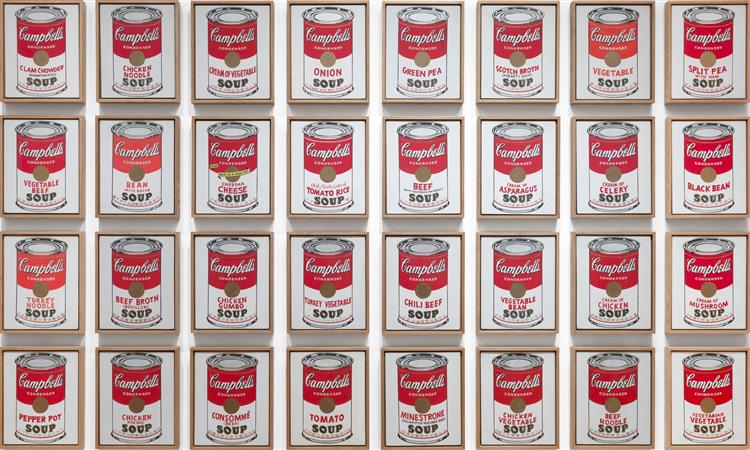Andy Warhol, Soup Cans
Andy Warhol (1928-1987) was the chief example the Pop Art lifestyle as well as the creator of highly individual works of art. With his flair for multimedia events and self-promotion, Warhol turned himself into a work of Pop Art and became the central figure of a controversial cult. One of his most characteristic works, Campbell’s Soup Cans illustrates his taste for commercial images. The clear precision of his forms and the absence of any visible reference to paint texture intensify the confrontation with the object represented – with the object as object. Warhol’s famous assertion “I want to be a machine” expresses his obsession with mass production and his personal identification with the mechanical, mindless, repetitive qualities of mass consumption.[1]

- Laurie Schneider Adams, Art Across Time, vol. 2, 4th ed., (New York: McGraw-Hill, 2011), 918. ↵

